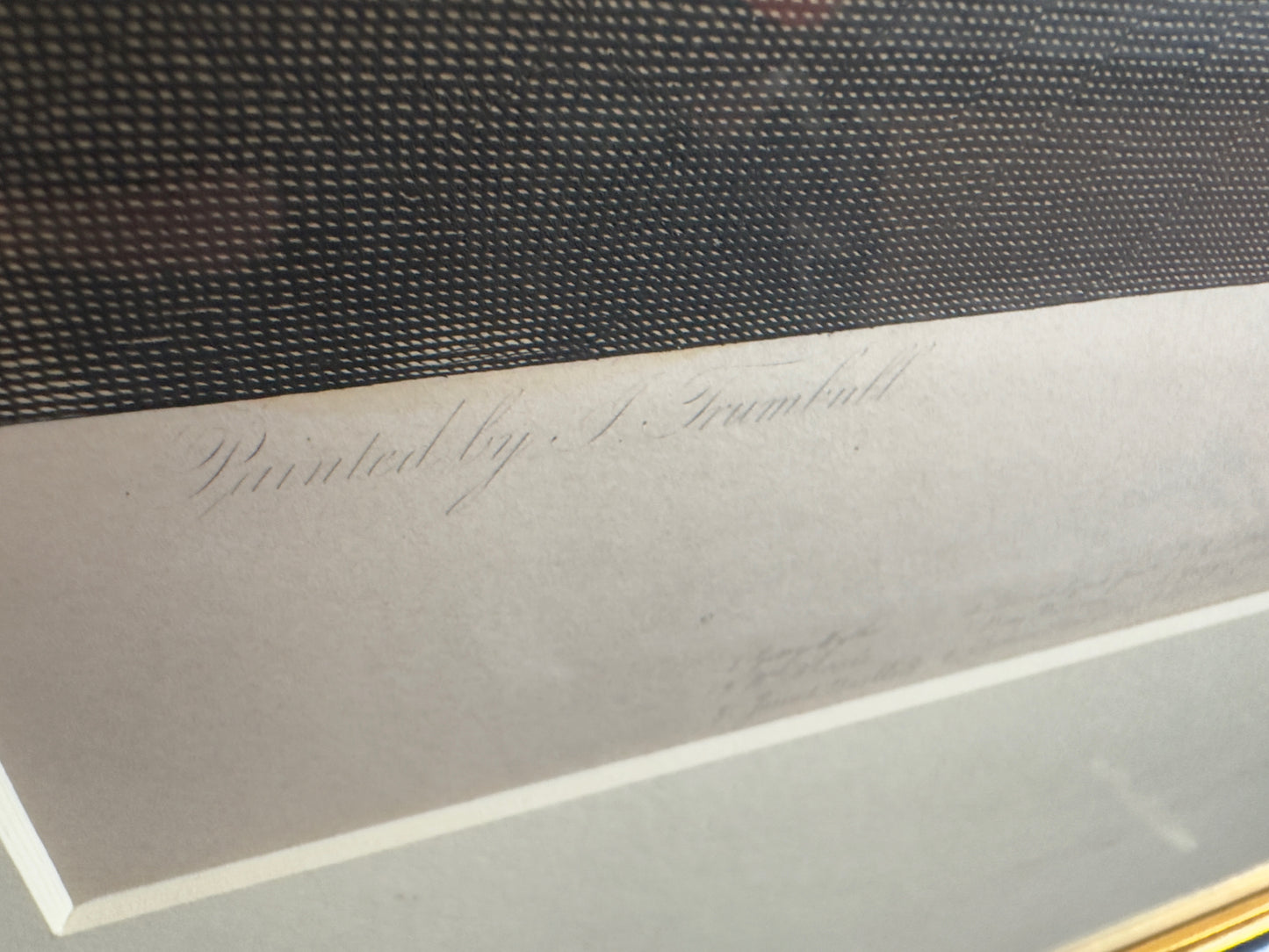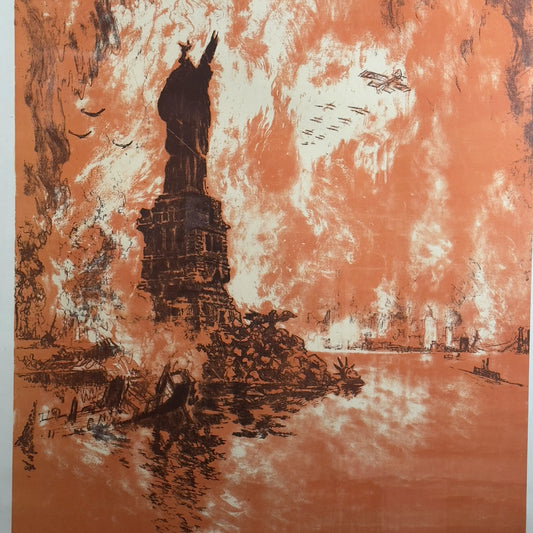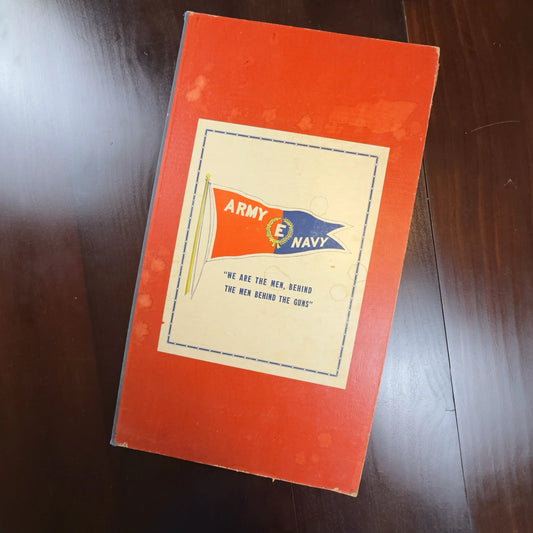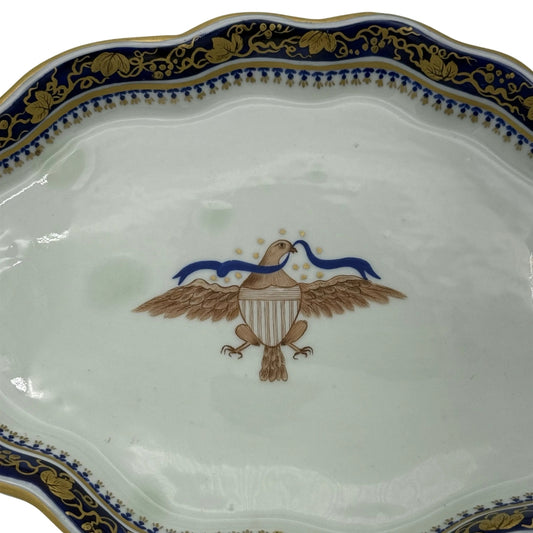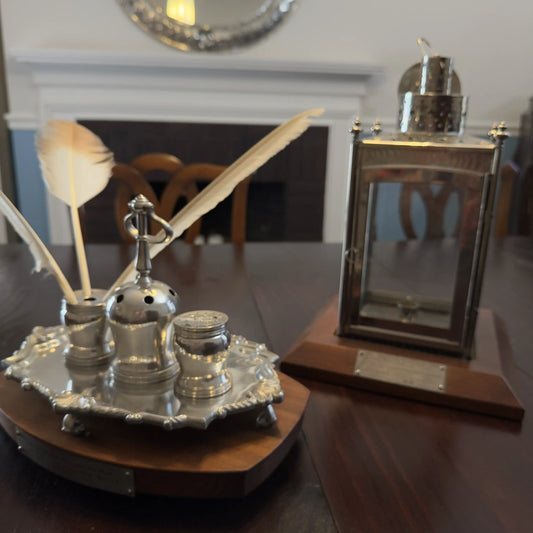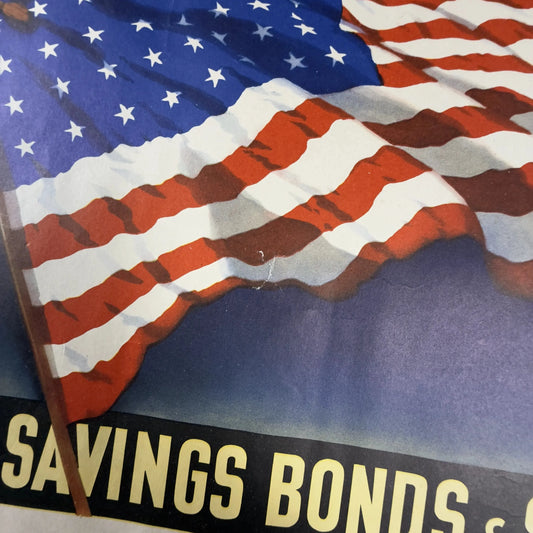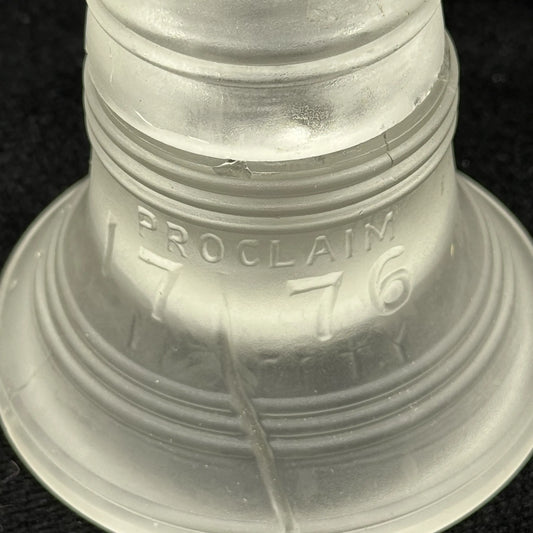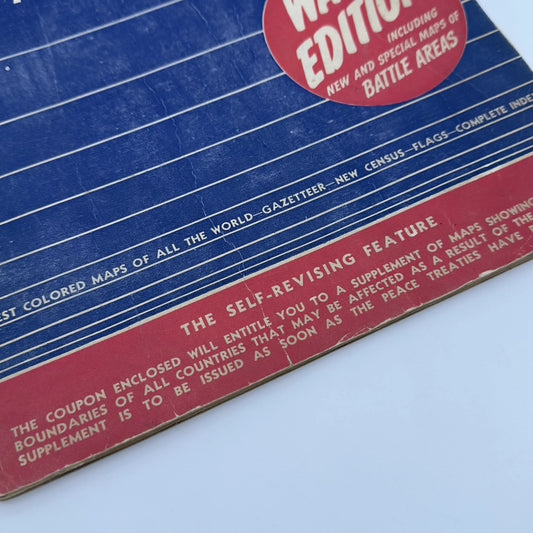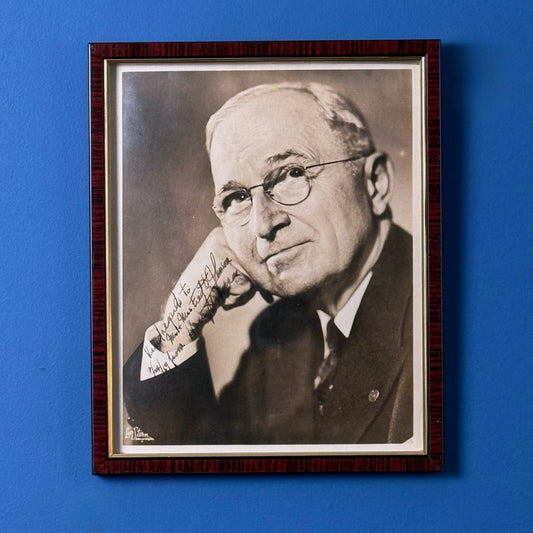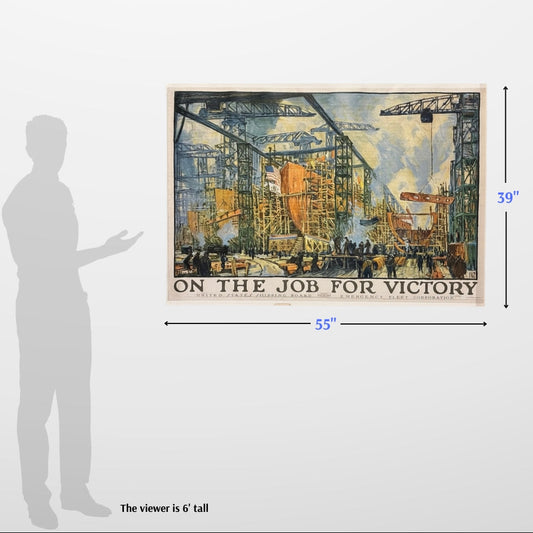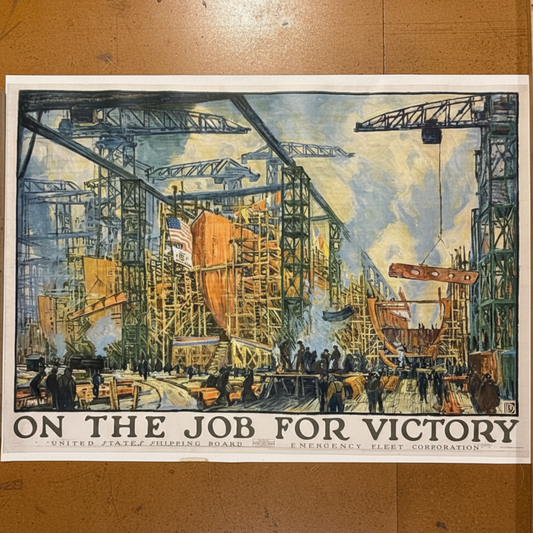"Declaration of Independence July 4, 1776," engraved by W.L. Ormsby after John Trumbull — Framed
"Declaration of Independence July 4, 1776," engraved by W.L. Ormsby after John Trumbull — Framed
Updated February 8: This has been sold.
Original engraving Declaration of Independence — July 4, 1776 after the painting by John Trumbull. Engraved by W.L. Ormsby and published by Cole & Company, NY in 1876 to mark the centenary of the United States.
Be sure and watch the video in addition to looking at the photos.
"The famous image shows the committee that drafted the Declaration of Independence, John Adams, Robert R. Livingston, Roger Sherman, Thomas Jefferson, who is presenting the document, and Benjamin Franklin, standing in front of John Hancock, the President of the Continental Congress. It includes 42 of the 56 signers and 5 other patriots, all drawn from life. (There is a key in the bottom margin to the men pictured in the painting.)
"W.L. Ormsby was a well-known engraver who founded the Continental Bank Note Company and also invented some improvements to the engraving process.
This engraving is the same one as is held in these institutions, with the difference being that the one we're offering was hand-colored:
Size of frame: 33" x 42"
Shipping: $125. Please allow two weeks for shipping.
Historical background on the event depicted
The Declaration Resources Project at Harvard has this explanation of what is actually depicted: " . . . it is often assumed that Declaration of Independence depicts the signing of the Declaration of Independence (an event which began on August 2nd, but continued for months as delegates arrived in or returned to Philadelphia). It could also be assumed that the painting depicts July 4th, Independence Day. In actuality, it is meant to depict the events of June 28th, 1776, when the Committee of Five (L-R: John Adams, Roger Sherman, Robert R. Livingston, Thomas Jefferson, Benjamin Franklin) presented their draft of the Declaration of Independence to President John Hancock and Congress."
About the painting, according to Monticello.org:
"John Trumbull's masterpiece, The Declaration of Independence of the United States of America, July 4th, 1776, was begun at Jefferson's residence in Paris. Trumbull later reported, "I began the composition of the Declaration of Independence, with the assistance of his [Jefferson's] information and advice." Jefferson contributed a firsthand description of the Assembly Room and made a rough sketch of it. Later, Trumbull painted Jefferson from life for the Declaration, and made three miniatures of the likeness. The committee responsible for the draft — John Adams, Roger Sherman, Robert R. Livingston, Jefferson, and Benjamin Franklin — was depicted to the right of center.
"Trumbull dedicated himself to portraying from life as many of the forty-eight signers as he could. Consequently, the original painting, located in the Yale University Art Gallery, was not completed until 1820. The young artist Asher B. Durand was selected to make the engraving, which was published in 1823. The small number of subscribers greatly disappointed Trumbull, who had worked for more than thirty-three years on it.
Source: The Worlds of Thomas Jefferson at Monticello
About the engraver, W.L. Ormsby:
"American engraver Asher B. Durand produce a large image of the Declaration, which subsequently became one of the most popular American patriotic scenes, leading to a number of other versions in different sizes. This is the finest of the derivative images, engraved by Waterman Lilly Ormsby (1809-1883). This print, approximately the size of Durand's original is an exquisite example of Ormsby's fine and strong work with the addition of a delicate and complete key etched at the bottom margin. This print is most likely a restrike or a later printing issued for the Centennial in order to celebrate the signing of the Declaration of Independence one hundred years earlier."
Source: Philadelphia Print Shop
Creating the image and offering it to the public in competition with the Binns engraving
Trumbull and the engraving of his The Declaration of Independence and Binns and his engraving of the Declaration in American History in Image and Text, by John Bidwell published in the proceedings of the American Antiquarian Society in 1988. The entire text of the article is available at the Antiquarian Society's site.
We offer an archival reproduction of the Binns engraving.
More on the individuals pictured and what actually happened
The Declaration Resources Project at Harvard has a longer write up on who is pictured as well as more information about the painting and what actually happened.
Additional information on the artist and this painting in context of the series he did
"John Trumbull, The Declaration of Independence," by Dr. Bryan Zygmont on the art history site, SmartHistory.
Made by America
Made by America
Almost all of the new products we offer are designed by us and made in America and most of our Rare Finds were made in America.
Our original designs are based on our nation’s history and our love of American history. Read more about other things we've created, including The History List, History Camp, and The Pursuit of History, in addition to The History List Store.
Every product that is made in America states that in the product description and includes the "Made in U.S.A." graphic.








